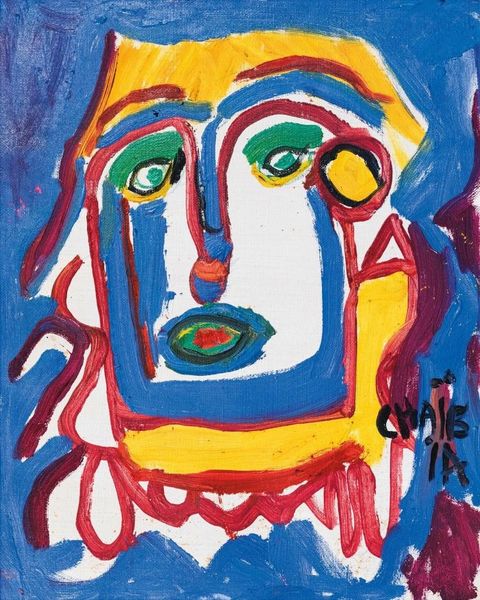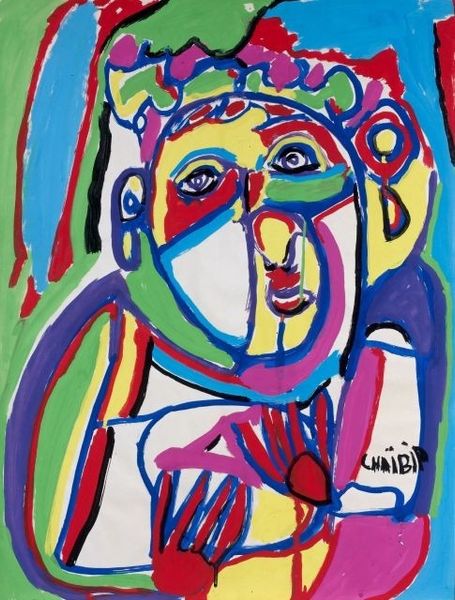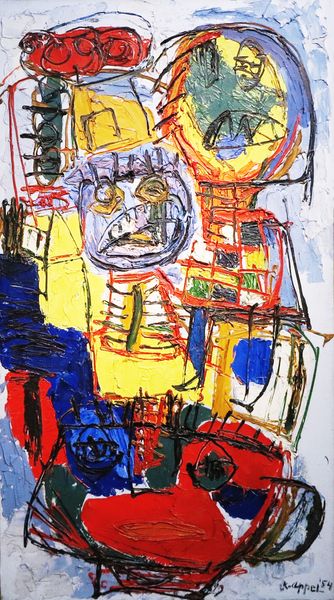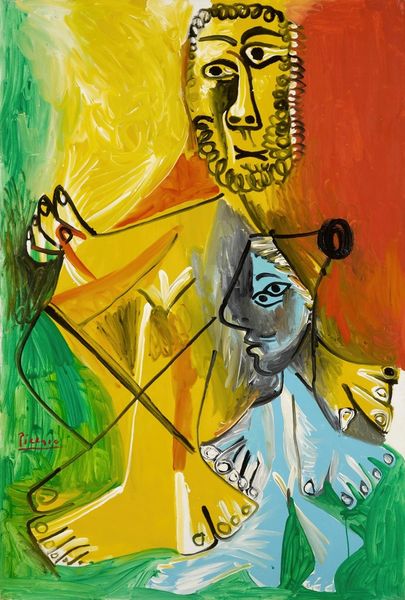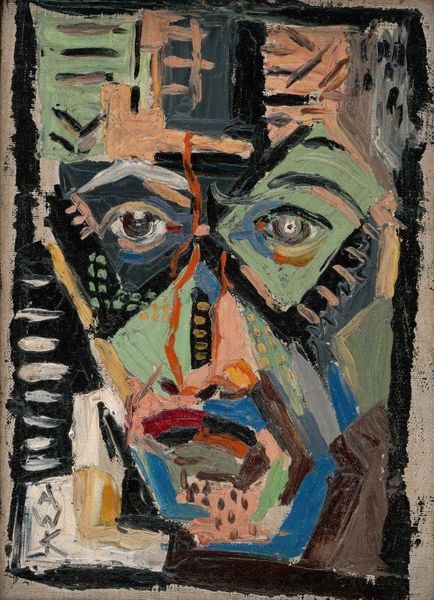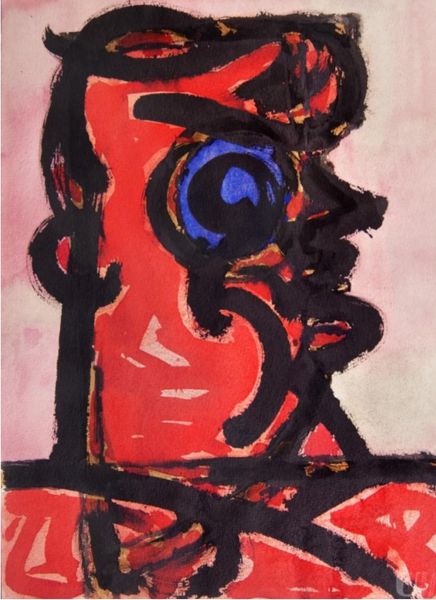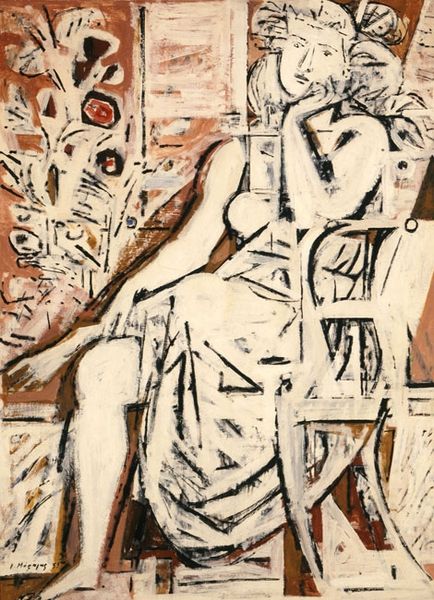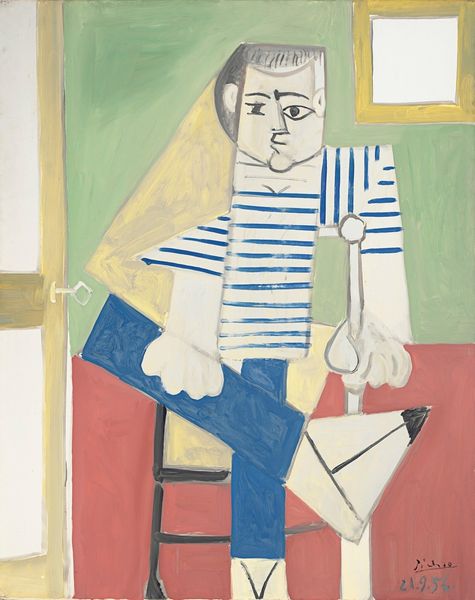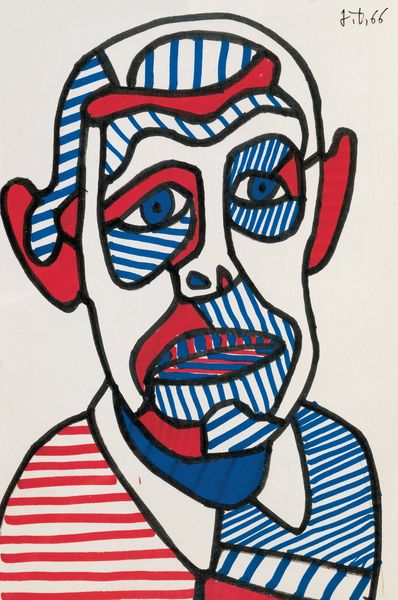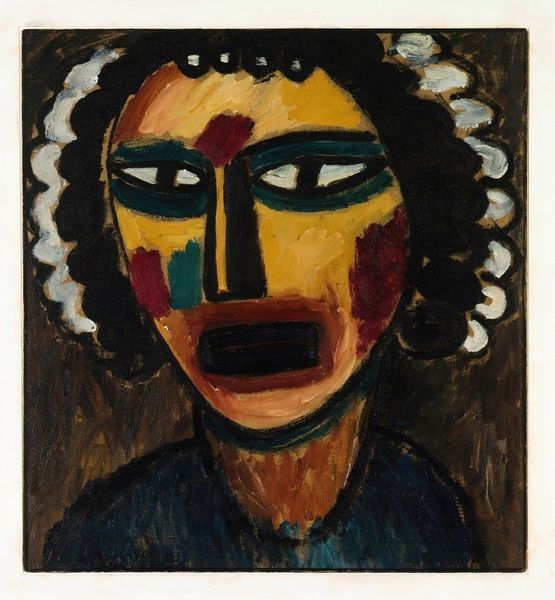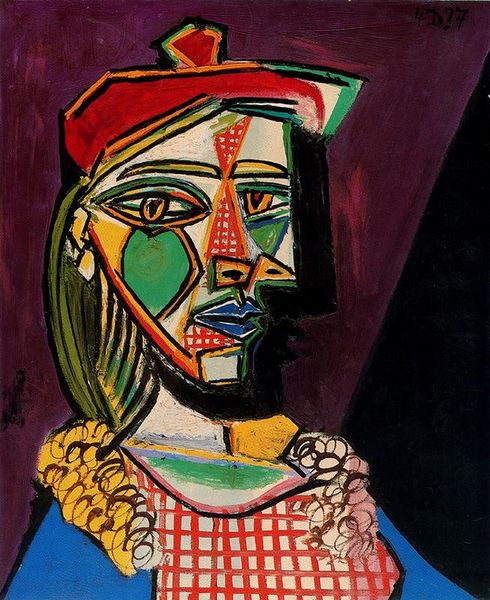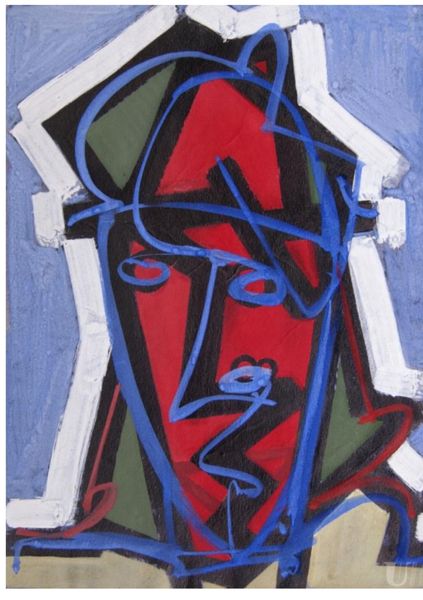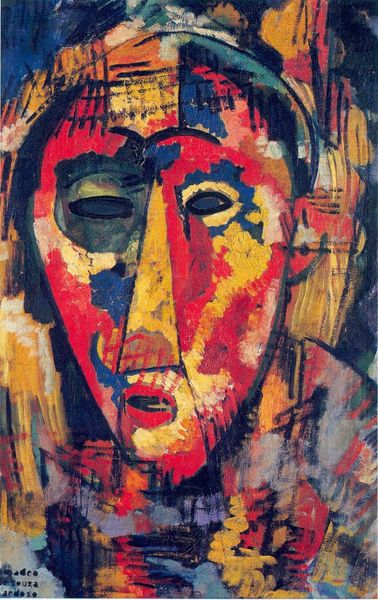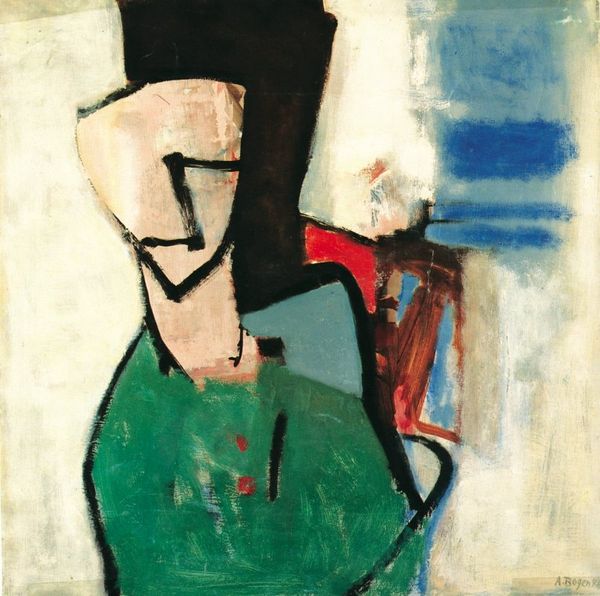
Copyright: Pablo Picasso,Fair Use
Editor: This is "Seated Man (Self-portrait)" by Pablo Picasso, painted in 1965. It's an oil painting, and the colors are really striking. It feels…almost confrontational. What do you see in this piece? Curator: Initially, one notices the radical simplification of form. Observe the near-arbitrary assignment of color, particularly in the facial region. Green eyes, blue shading, a stark red nose. There's a dissonance created by this application of color. How does this seemingly unstructured palette inform your understanding? Editor: I guess it feels almost jarring, like the colors are fighting each other instead of harmonizing. The lines seem almost aggressive. Curator: Precisely. The Fauvist influence is undeniable. Note the energetic impasto brushstrokes that contribute to the work’s raw, almost visceral energy. This aggressive mark-making, divorced from any traditional modeling or shading, serves to underscore the painting's internal dynamism. Editor: So, it's not just about *what* he painted, but *how* he painted it. How the texture and color work together is really important? Curator: Indeed. Dismiss the impulse to see only a representation. Look instead at the tension established between line, color, and form. What affect do you think that creates? Editor: That’s fascinating. I didn't realize how much was happening just in the way the paint was applied! Curator: Quite. This self-portrait becomes less about depicting an external likeness and more about an internal, perhaps even turbulent, emotional state expressed through purely formal means. It compels the viewer to see beyond representation into pure structural components.
Comments
No comments
Be the first to comment and join the conversation on the ultimate creative platform.
